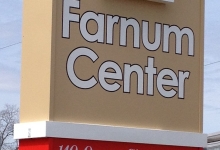What is consensus building?
Consensus building is a process that allows participants to build rapport through discussions that assist in developing better communication, relationships, agreed understanding of the issues and ultimately enhanced and coordinated response. Consensus building, is akin to collaborative problem solving and collaboration, and can assist groups to reach agreement on conflicting proposals and /or to problem-solve.
Consensus building does not equal consensus – it is the process used by which consensus could be reached – but is not mandatory. It may lead to other forms of decision making, but generally its objective is a better solution acceptable and supported by most if not all of the stakeholders.
What is a Consensus Building Process?
Castagna Consulting Group serves as the facilitator in the consensus process. Representatives of all the necessary interests with a stake in an issue work together to find mutually acceptable solutions. Successful consensus building processes follow several guiding principles:
Consensus decision-making – Participants make decisions by agreement rather than by majority vote.
Collaborative problem-solving – A collaborative problem-solving or “win-win” negotiation techniques are used to help address different positions, opinions and proposals.
Inclusiveness – All necessary interests are represented or, at a minimum, approve of the discussions.
Accountability – Participants usually represent stakeholder groups or interests. They are accountable both to their constituents and to the process.
Facilitation – Castagna Consulting Group as an impartial facilitator, is accountable to all participants. We manage the process, ensures that ground rules are followed, and helps maintain a productive climate for communication and problem solving.
Flexibility – Participants design a process and address the issues in a manner they determine most suitable to the situation.
Shared control – Participants share responsibility for setting the ground rules for a process and for creating outcomes.
Commitment to implementation – The sponsor and all stakeholder groups commit to carrying out their agreement. Consensus-building emphasizes cooperation in sharing information and airing differences, which provides an opportunity to test assumptions, question our biases and for new ideas to emerge. It also affects how members experience the process and the value of their contributions.
When to use a consensus building approach?
A concensus building approach is most useful when:
- Participants have perspectives and information that are potentially valuable to the decision-making, prioritisation and planning process
- Partner “buy in” plays a vital motivational role with real consequences for commitment and follow-through
- The way forward is in doubt and/or solutions are ambiguous
- Solutions require interdependent action by stakeholders
- You want the participants to feel ownership for priorities and decisions reached
- Power, information & implementation is fragmented among many stakeholders
- Stakeholders hold conflicting views yet unity on major decisions is required to uphold standards
- “Good” Relationship among key stakeholders are needed in the future
When should a consensus building approach not be used?
Concensus building is not appropriate for all situations, including:
- When the problem is not complex and/or where the solutions to implement are highly technical, clearly obvious, or options are severely limited
- Humanitarian standards and objectives are being compromised or threatened
- Another decision making process is more efficient and effective
- Stakeholders are extremely politicized
- Decision-makers are not at the table
What factors contribute to consensus building
As a Consensus Building Facilitator, we play a key role in coordinating the process. Some techniques for doing this include:
- Keep the group focused on the common problem to be solved.
- Remember and review common goals.
- Remain calm and respectful to all members.
- Use active listening and questioning skills.
- Communicate openly.
- Focus on and explore underlying interests. Solutions are found among the interests – not in the position that each party brings to the table. Approach the decision or discussion with a “problem-solving” mindset rather than an adversarial mindset.
- Avoid demonizing those who may prove difficult. Use active listening skills to learn why they may object or resist the actions or decisions of the group.
- Trust the process – believe that you can reach agreement and infuse this belief throughout the group.
- Identify and grow the “zones of agreement” – these are those areas and priorities on which the group agrees
- Break larger groups down into smaller groups tasked with specific responsibilities. It is easier to work out agreement with a smaller group of representatives (6-8 people) than with a larger group.




